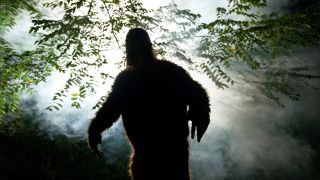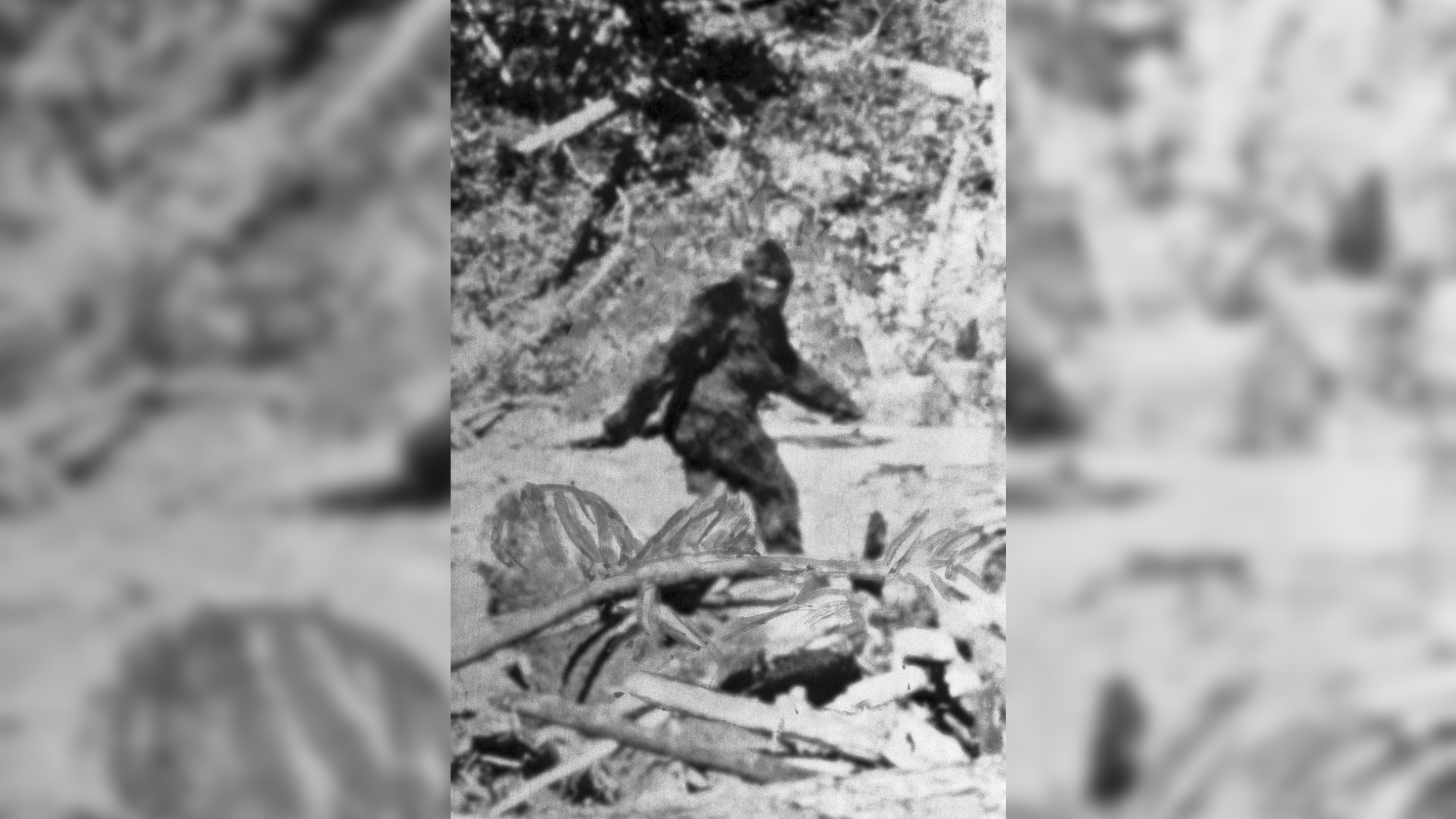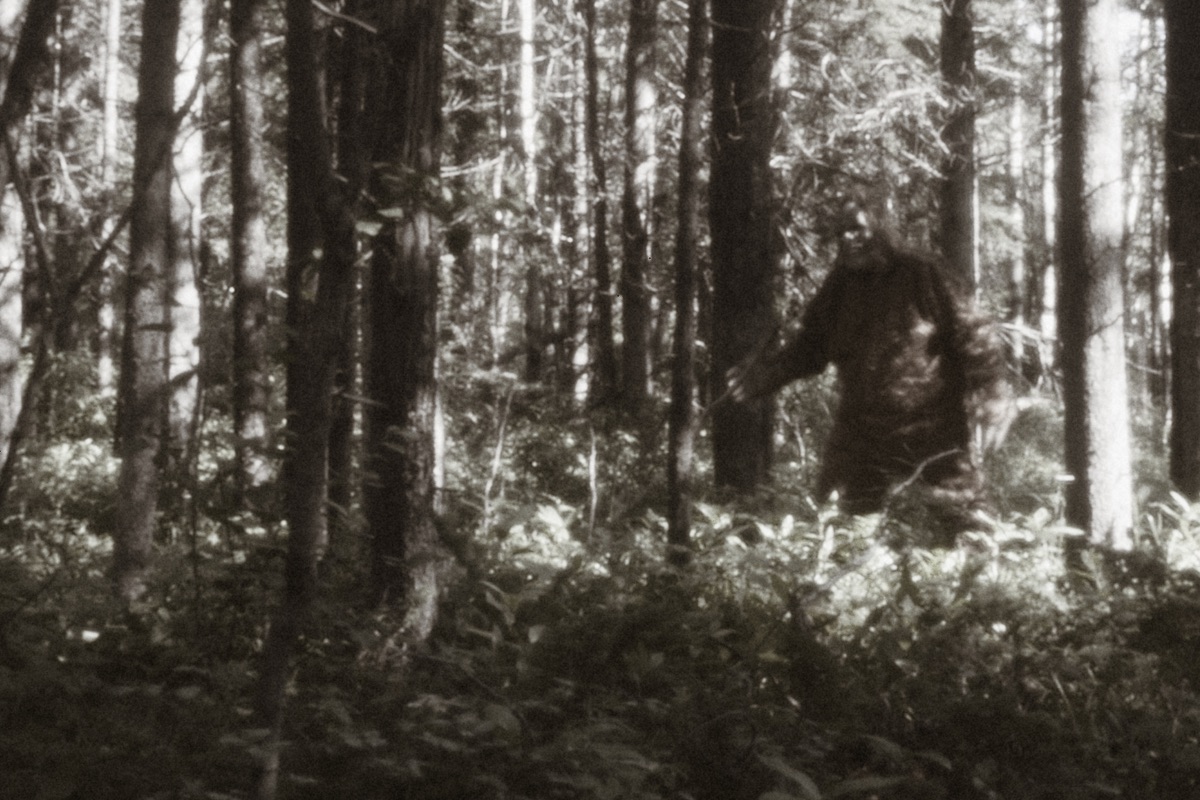How Big Do Black Bears Get in Oregon
Is Bigfoot real? You likely already know the answer.

Bigfoot, also known as Sasquatch, is a giant ape-like cryptid (or species rumored to exist) that some people believe roams North America. There is scant physical evidence that any such creatures exist, but Bigfoot buffs are convinced they do, and that science will prove it.
Most sightings of Bigfoot occur in the Northwest and the creatures can be linked to Indigenous myths and legends of wild men. The word Sasquatch is derived from Sasq'ets, a word from the Halq'emeylem language used by some Salish First Nations peoples in southwestern British Columbia, according to the Oregon Encyclopedia.
As early as 1884, the British Colonist newspaper in Victoria, BC published an account of a "gorilla type" creature captured in the area. Other accounts, largely decried as hoaxes, followed, according to the Canadian Encyclopedia: Sasquatch book author John Green compiled a list of 1,340 sightings through the 19th and 20th centuries. But the modern Bigfoot or Sasquatch myth gained new life in the late 1950s.
Related: Infographic: Tracking belief in Bigfoot
In 1958, the Humboldt Times, a local newspaper in Northern California, published a story about the discovery of giant, mysterious footprints near Bluff Creek, California, and referred to the creature that made them as "Bigfoot", according to Smithsonian Magazine. Interest in Bigfoot grew rapidly during the second half of the 20th century, after an article in True magazine, published in December 1959, described the 1958 discovery.
In 2002, the children of Ray Wallace revealed that the footprints near Bluff Creek had been their father's prank, according to Smithsonian Magazine. By that time, though, Bigfoot was firmly established in popular culture across the continent. Since that article was published, a wealth of other claims have been made about Sasquatch tracks, casts, photos, videos, and other "evidence."
Bigfoot sightings

By far the most common evidence presented for the existence of Bigfoot is eyewitness reports. There have been more than 10,000 eyewitness accounts of the creature in the continental U.S. in the last 50 years, Live Science reported in 2019. In these accounts, Bigfoot is usually described as being about 8 to 10 feet (2.4 to 3 meters) tall and covered in hair.
Unfortunately, Bigfoot sightings are also by far the weakest type of evidence. Eyewitness accounts are based on memories, and memories are not reliable, Live Science previously reported. Crime witnesses, for example, can be influenced by their emotions and may miss important details in what they are seeing. In the same vein, people also often overestimate their ability to remember things. When it comes to cryptids like Bigfoot, the human brain is capable of making up explanations for events it can't immediately interpret, and many people simply want to believe they exist, Live Science previously reported.
Some people claim to have heard Bigfoot vocalizations, including howls, growls and screams. The creatures are also associated with other noises, such as wood-knocking, according to Scientific American. Recordings of these noises occasionally attract media attention but can usually be attributed to known animals, such as foxes or coyotes.
Related: Real or not? The science behind 12 unusual sightings
Bigfoot video and photographs
The most famous Bigfoot video is a short film taken in 1967 by Roger Patterson and Bob Gimlin. Shot in Bluff Creek, it shows a large, dark, human-size and human-shape figure striding through a clearing. Widely considered a hoax, it remains to this day the best evidence for the existence of Bigfoot. With the rise of high-quality cameras in smartphones, photographs of people, cars, mountains, flowers, sunsets, deer and more have gotten sharper and clearer over the years; Bigfoot is a notable exception.
The logical explanation for this discrepancy is that the creatures don't exist, and that photographs of them are merely hoaxes or misidentifications.
Related: Did hiker film Bigfoot, black bear or 'Blobsquatch'?
Elusive hard evidence
In his book "Big Footprints" (Johnson Books, 1992), veteran researcher Grover Krantz discussed alleged Bigfoot hair, feces, skin scrapings and blood. "The usual fate of these items is that they either receive no scientific study, or else the documentation of that study is either lost or unobtainable. In most cases where competent analyses have been made, the material turned out to be bogus or else no determination could be made," Krantz said.
When a definite conclusion has been reached through scientific analysis, the samples have typically turned out to have ordinary sources. For example, in 2014, a team of researchers led by geneticist Bryan Sykes from the University of Oxford in England, conducted genetic analysis on 36 hair samples claimed to belong to Bigfoot or the Yeti — a similar ape-like creature said to exist in the Himalayas. Almost all of the hairs turned out to be from known animals such as cows, raccoons, deer and humans. However, two of the samples closely matched an extinct Paleolithic polar bear, Live Science previously reported. These samples may have come from an unknown bear species or a hybrid of modern bears, but they were from a bear, not a primate.
Related: Bigfoot's FBI file reveals strange story of a monster hunter and 15 mysterious hairs
Genetics provide another reason to doubt the existence of Bigfoot. The science suggests that there can't just be one elusive, unique creature. Many individuals would have to exist to provide enough genetic diversity to maintain a population. This increases the chances that one would be killed by a hunter or hit by a motorist on a highway, or even found dead (by accident, disease, or old age) by a hiker or farmer at some point, yet no bodies have ever been found. People do occasionally claim to find bones or other large body parts. For example, a man in Utah discovered what he thought was a fossilized Bigfoot skull in 2013. A paleontologist confirmed that the "skull" was simply an oddly weathered rock, Live Science previously reported.

Bigfoot hoaxes
Bigfoot hoaxers have further complicated the problem of Sasquatch fact and fiction. Dozens of people have admitted faking Bigfoot prints, photographs, and nearly every other type of Bigfoot evidence. A man named Rant Mullens revealed in 1982 that he and friends had carved giant Bigfoot feet and used them to fake footprints for decades.
In 2008, two men from Georgia claimed to have a complete, frozen Bigfoot specimen that they found on a hike. Their Bigfoot turned out to be a gorilla costume, Reuters reported in 2008. Until better evidence comes along, old evidence will be rehashed and re-examined — and unless Bigfoot is proven to be alive, the search will continue.
Justin Humphrey, an Oklahoma lawmaker, proposed creating a Bigfoot hunting season in January, 2021, according to CNN. Humphrey suggested that the hunting season could coincide with an annual Bigfoot festival that takes place in Honobia, Oklahoma, and would help to bring more tourists to the area. Oklahoma tourism officials later announced a $2.1 million bounty in March for the capture of a live Bigfoot, according to NPR.
Related: 'Expedition Bigfoot' scours Oregon woods for signs of the mythical and elusive beast
The real Bigfoot
Scientific evidence for the existence of a modern-day Bigfoot may be proving elusive, but a giant, bipedal ape did once walk the Earth. A species named Gigantopithecus blacki was about 10 feet (3 m.) tall and weighed up to 595 lbs. (270 kilograms), based on fossil evidence. However, Gigantopithecus lived in Southeast Asia, not North America, and went extinct hundreds of thousands of years ago. The extinct ape is also more closely related to modern orangutans than to humans or our closest relatives, chimpanzees and bonobos, Live Science previously reported.
Benjamin Radford is deputy editor of "Skeptical Inquirer" science magazine and author of six books, including "Tracking the Chupacabra" and "Scientific Paranormal Investigation: How to Solve Unexplained Mysteries."
Additional resources
- Why Bigfoot is unlikely only if you know what "unlikely" means.
- Cal Alumni Association: Does science benefit from the search for Sasquatch?
- Times-Standard: Throwback Thursday: If the shoe fits, it's Bigfoot's.
This article was updated on April 14, 2021 by Live Science staff writer, Patrick Pester.

Benjamin Radford is the Bad Science columnist for Live Science. He covers pseudoscience, psychology, urban legends and the science behind "unexplained" or mysterious phenomenon. Ben has a master's degree in education and a bachelor's degree in psychology. He is deputy editor of Skeptical Inquirer science magazine and has written, edited or contributed to more than 20 books, including "Scientific Paranormal Investigation: How to Solve Unexplained Mysteries," "Tracking the Chupacabra: The Vampire Beast in Fact, Fiction, and Folklore" and "Investigating Ghosts: The Scientific Search for Spirits," out in fall 2017. His website is www.BenjaminRadford.com.
How Big Do Black Bears Get in Oregon
Source: https://www.livescience.com/24598-bigfoot.html